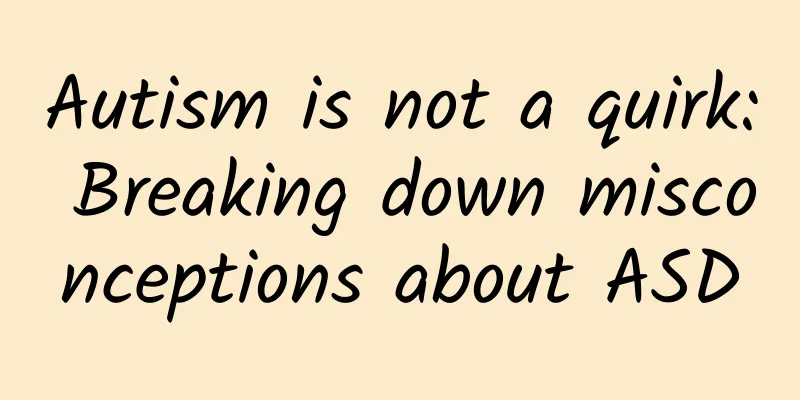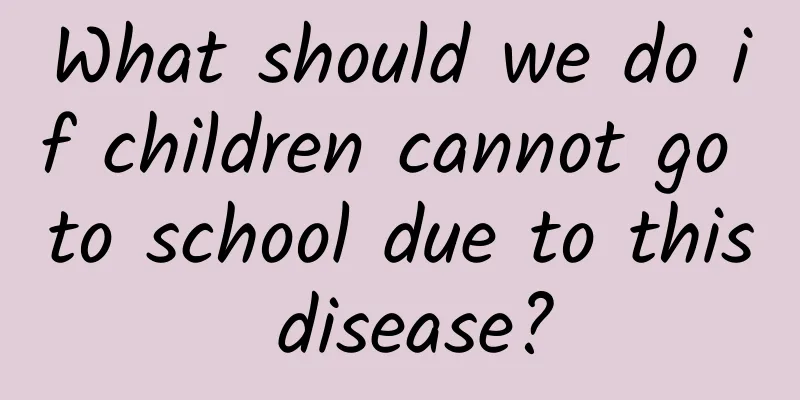Autism is not a quirk: Breaking down misconceptions about ASD

|
In this colorful world, every child is a unique star, shining his or her own light in the night sky. However, there is a group of children who seem to be shrouded in a mysterious fog and are difficult to be understood by the outside world. They are children with autism spectrum disorder (ASD). In society, many people often misunderstand autism as "quirks" or "unsociable", and even use romanticized labels such as "star children" to describe them. But today, let us unveil this mysterious veil together, enter the real world of autism, break the society's misunderstanding of ASD, and discover those genius codes that have not been understood. 1. Unveiling the mystery of autism: What exactly is ASD? Imagine that you are standing in a vast universe, and each star represents a different form of life. Children with autism are like those stars that shine with special light. Their inner world is rich and complex, but the way they express it is different from ours. Autism spectrum disorder (ASD) is a complex neurodevelopmental disorder that affects an individual's social interactions, communication skills, and behavior patterns. ASD is not caused by a single factor, but is the result of multiple factors, including genetics and the environment. This means that every child with ASD is unique, with varying degrees of severity and manifestations. Children with ASD may appear clumsy in social interactions and have difficulty understanding other people's emotions and non-verbal signals; they may pay too much attention to details and have an unusual obsession and interest in certain things; or they may have differences in sensory processing and be abnormally sensitive or insensitive to stimuli such as sound and light. However, these so-called "abnormalities" are actually their unique way of thinking and perceiving the world. 2. Breaking the stereotype: Autism is not a “quirk” On social media, we occasionally see videos of children with ASD who may repeat certain actions or communicate with others in a seemingly "weird" way. These images are often labeled as "quirks", which arouse the curiosity of the audience. But in fact, this is just a way for children with ASD to express themselves and deal with the world. Children with ASD do not deliberately appear "weird", they just understand and perceive the world in a different way. Their behavior patterns may seem inconsistent with social norms, but this does not mean that they lack emotional or social abilities. On the contrary, they may have a rich inner world and unique ways of expressing emotions. Therefore, we should abandon the stereotypes about children with ASD and look at them with a more inclusive and understanding attitude. They are not synonymous with "quirks", but individuals with unique talents and potential. 3. Discover the Genius Code: The Unique Abilities and Potential of Children with ASD In the world of ASD, there are many undiscovered genius codes hidden. Many ASD children show extraordinary gifts and talents in certain areas. • Musical genius : Some children with ASD have extraordinary sensitivity and perception of music. They may be able to accurately identify notes, rhythms and melodies, and even play complex music without professional training. • Mathematical genius : Children with ASD often have a strong interest in numbers and logic. They may be good at solving complex math problems and have an amazing sensitivity to numerical operations and logical reasoning. • Memory Masters : Children with ASD often have amazing memories. They may be able to remember vast amounts of facts and information, even down to an incredible level of detail. • Visual Artists : Children with ASD have a unique sense of color and shape. They may excel in visual arts such as painting, design or photography, creating stunning works. However, these gifts and talents are often masked by the social barriers and communication difficulties of children with ASD. Therefore, we need to observe and understand them more carefully, discover and cultivate their unique abilities and potential. 4. How to get along with children with ASD: A practical guide Getting along with children with ASD requires certain skills and methods. Here are some practical suggestions to help you better understand and support them: 1. Establish a trusting relationship : Children with ASD often feel uneasy with strangers or new environments. Therefore, when you get along with them, you must first establish a trusting relationship. Through stable companionship and interaction, let them feel your care and support. 2. Respect their interests and preferences : Children with ASD may have an unusual obsession and interest in certain things. Respecting their interests and preferences, sharing and exploring these areas with them can deepen mutual understanding and connection. 3. Use simple and clear language : Children with ASD may have difficulty understanding and processing language information. Therefore, when communicating with them, use simple and clear language and avoid using complex vocabulary or sentence structures. 4. Provide a structured environment : Children with ASD prefer an orderly and predictable environment. Providing them with a structured schedule and clear behavioral norms can help them better adapt and integrate into society. 5. Encourage social interaction : Although children with ASD may appear clumsy or lack confidence in social interactions, it is very important to encourage them to participate in social activities. Through group activities, role-playing, etc., help them gradually improve their social skills and self-confidence. 6. Seek professional support : Getting along with children with ASD is a long and complex process. If you feel confused or helpless, you may wish to seek professional support and help. Professional therapists and educators can provide personalized guidance and advice to help you better understand and support children with ASD. 5. Conclusion: Autism is not a disorder, but a unique gift In this world full of diversity, every child is a unique star. Children with autism, although their light may shine in different ways, are equally worthy of our respect and cherishment. They are not "star children", but individuals with unique talents and potential. Let us break the misunderstandings and prejudices about ASD and look at them with a more inclusive and understanding attitude. By discovering their genius codes and providing appropriate support and help, we can work together to create a better and more inclusive society. |
<<: Got acne? Come, let’s talk…
Recommend
How to maintain after uterine fibroid surgery
Uterine fibroids are a relatively common gynecolo...
What is Kidney Yin Deficiency? Causes of Kidney Yin Deficiency
The phenomenon of kidney yin deficiency is relati...
Treatment of gynecological inflammation cervicitis
I believe everyone is familiar with diseases such...
Five foods rich in collagen, just look at them if you want to be beautiful
Nowadays, when we talk about a female friend bein...
Can you shave during menstruation? Learn three things in advance
Gua Sha has been a medical method in China for th...
I got pregnant again the same month after induced abortion.
Creating life is a heritage, a duty, and an incom...
Can I drink water spinach juice? What foods are incompatible with water spinach?
Water spinach is a common vegetable, formerly kno...
What to do during menstrual period for female athletes
Compared to men, women are physically weaker, so ...
Is it better to have an abortion or medical abortion when you are one month pregnant?
Women who become pregnant without prior consent n...
How often should I change my contraceptive ring?
The contraceptive ring is something placed in the...
What to do if you have a "double positive"? Authoritative answers
Recently, some people have tested positive for CO...
What can a woman do if she has 400 menstruations in her lifetime?
1. Breast enhancement: 1-3 days during menstruati...
Yellow urine during pregnancy
When we often stay up late, our urine usually tur...
How to treat damp-heat constipation? Chinese medicine prescriptions are effective
Do you often feel sticky, have an oily face, no a...
What causes gynecological bacterial infection
Gynecological bacterial infection is not familiar...







![[Medical Q&A] If you suspect femoral head necrosis, what tests should you do?](/upload/images/67f0e8afb18dc.webp)

